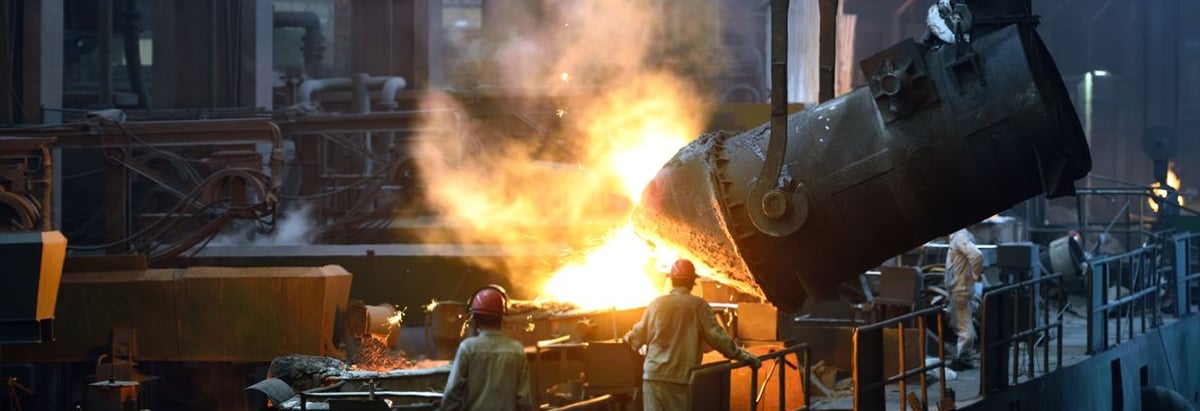- United States
- /
- Machinery
- /
- NYSE:WOR
Don't Sell Worthington Industries, Inc. (NYSE:WOR) Before You Read This

This article is written for those who want to get better at using price to earnings ratios (P/E ratios). We'll look at Worthington Industries, Inc.'s (NYSE:WOR) P/E ratio and reflect on what it tells us about the company's share price. What is Worthington Industries's P/E ratio? Well, based on the last twelve months it is 13.07. That is equivalent to an earnings yield of about 7.7%.
View our latest analysis for Worthington Industries
How Do I Calculate A Price To Earnings Ratio?
The formula for P/E is:
Price to Earnings Ratio = Share Price ÷ Earnings per Share (EPS)
Or for Worthington Industries:
P/E of 13.07 = $23.730 ÷ $1.816 (Based on the trailing twelve months to February 2020.)
(Note: the above calculation results may not be precise due to rounding.)
Is A High Price-to-Earnings Ratio Good?
A higher P/E ratio means that buyers have to pay a higher price for each $1 the company has earned over the last year. All else being equal, it's better to pay a low price -- but as Warren Buffett said, 'It's far better to buy a wonderful company at a fair price than a fair company at a wonderful price'.
Does Worthington Industries Have A Relatively High Or Low P/E For Its Industry?
The P/E ratio indicates whether the market has higher or lower expectations of a company. As you can see below, Worthington Industries has a higher P/E than the average company (8.4) in the metals and mining industry.

Worthington Industries's P/E tells us that market participants think the company will perform better than its industry peers, going forward. Clearly the market expects growth, but it isn't guaranteed. So further research is always essential. I often monitor director buying and selling.
How Growth Rates Impact P/E Ratios
When earnings fall, the 'E' decreases, over time. That means even if the current P/E is low, it will increase over time if the share price stays flat. So while a stock may look cheap based on past earnings, it could be expensive based on future earnings.
Worthington Industries's earnings per share fell by 28% in the last twelve months. But EPS is up 8.5% over the last 5 years. And over the longer term (3 years) earnings per share have decreased 18% annually. This might lead to low expectations.
A Limitation: P/E Ratios Ignore Debt and Cash In The Bank
The 'Price' in P/E reflects the market capitalization of the company. In other words, it does not consider any debt or cash that the company may have on the balance sheet. Hypothetically, a company could reduce its future P/E ratio by spending its cash (or taking on debt) to achieve higher earnings.
Such expenditure might be good or bad, in the long term, but the point here is that the balance sheet is not reflected by this ratio.
Worthington Industries's Balance Sheet
Net debt is 45% of Worthington Industries's market cap. While that's enough to warrant consideration, it doesn't really concern us.
The Bottom Line On Worthington Industries's P/E Ratio
Worthington Industries's P/E is 13.1 which is below average (14.3) in the US market. With only modest debt, it's likely the lack of EPS growth at least partially explains the pessimism implied by the P/E ratio.
Investors should be looking to buy stocks that the market is wrong about. As value investor Benjamin Graham famously said, 'In the short run, the market is a voting machine but in the long run, it is a weighing machine. So this free report on the analyst consensus forecasts could help you make a master move on this stock.
Of course, you might find a fantastic investment by looking at a few good candidates. So take a peek at this free list of companies with modest (or no) debt, trading on a P/E below 20.
If you spot an error that warrants correction, please contact the editor at editorial-team@simplywallst.com. This article by Simply Wall St is general in nature. It does not constitute a recommendation to buy or sell any stock, and does not take account of your objectives, or your financial situation. Simply Wall St has no position in the stocks mentioned.
We aim to bring you long-term focused research analysis driven by fundamental data. Note that our analysis may not factor in the latest price-sensitive company announcements or qualitative material. Thank you for reading.
About NYSE:WOR
Flawless balance sheet and fair value.
Similar Companies
Market Insights
Community Narratives





